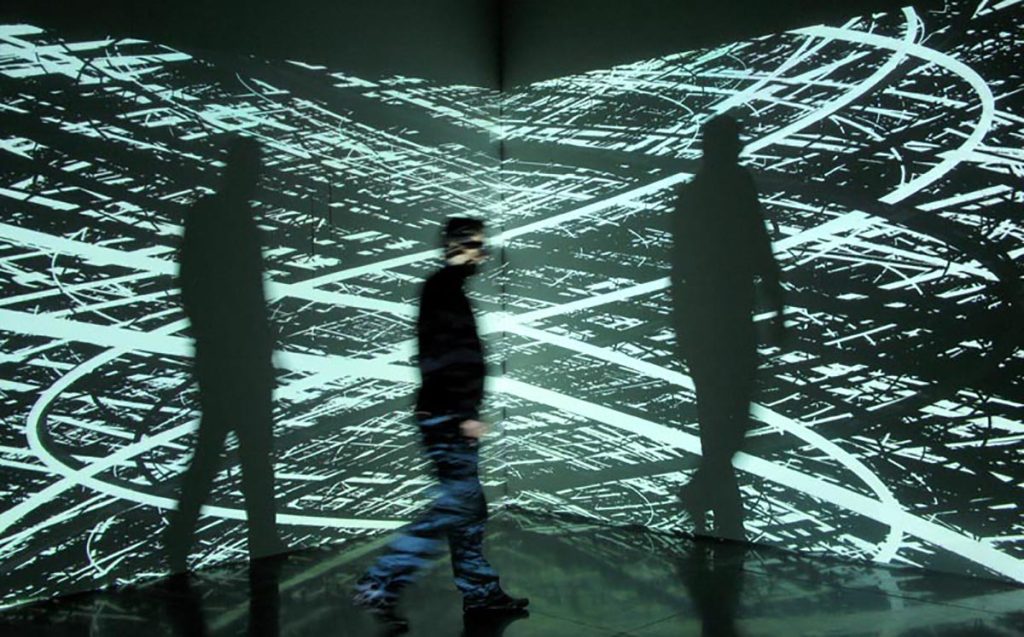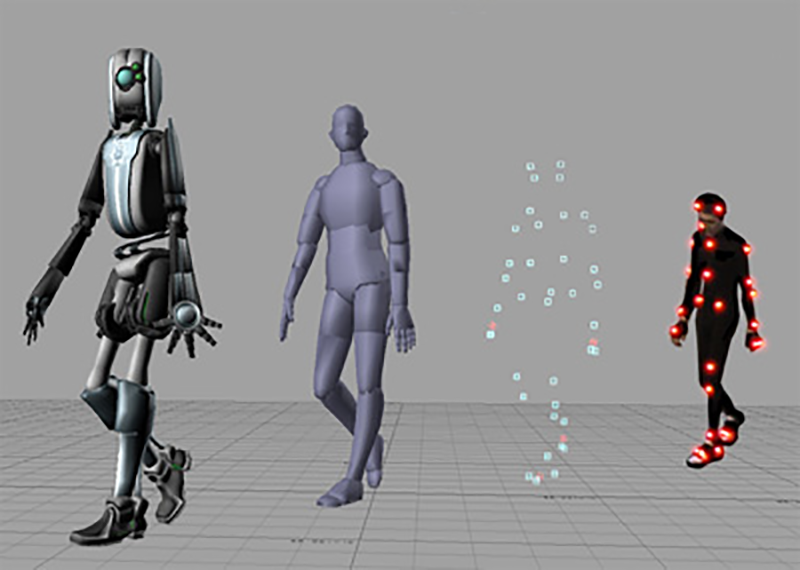Chapter 7.1: Digital Art
Digital art describes artistic works and practices that use digital technology as a part of the creative process.
Video
Here is the British Council’s introduction, What is Digital Art?
What is Digital Art? (5:47)

Since the 1970s, various names have been used to describe such artwork, including computer art, multimedia art, and digital art itself is placed under the larger umbrella term of new media art. The impact of digital technology has transformed activities such as painting, drawing, sculpture, and music, while new forms (such as net art, digital installation art, and virtual reality) have become recognized as art. More generally, the term digital artist describes one who creates art using digital technologies. The term digital art is also applied to contemporary art that uses methods of mass production or digital media.
Digital production techniques in visual media are used extensively by the mainstream media in advertisements and by filmmakers to produce special effects. Both digital and traditional artists use many sources of electronic information and programs to create their work. Digital art can be purely computer-generated or taken from other sources, such as scanned photographs or images drawn using graphics software. The term may technically be applied to art done using other media or processes and merely scanned into a digital format, but digital art usually describes art that has been significantly modified by a computer program. Digitized text, raw audio, and video recordings are usually not considered digital art alone but can be part of larger digital art projects. Digital painting is created in a similar fashion to non-digital painting, but instead, it uses software to create and distribute the work.
Computer-Generated Visual Media
Digital visual art consists of two-dimensional (2D) information displayed on a monitor as well as information mathematically translated into three-dimensional (3D) images and viewed through perspective projection on a monitor.

The simplest form is 2D computer graphics, which reflect drawings made using a pencil and paper. In this case, however, the image is on the computer screen and the instrument used to draw might be a stylus or mouse. The creation might appear to be drawn with a pencil, pen, or paintbrush. Another kind of digital video art is 3D computer graphics, where the screen becomes a window into a virtual environment of arranged objects that are “photographed” by the computer. Many software programs enable collaboration, lending such artwork to sharing and augmentation so users can collaborate on an artistic creation. Computer-generated animations are created with a computer from digital models. The term is usually applied to works created entirely with a computer. Movies make heavy use of computer-generated graphics, which are called computer-generated imagery (CGI) in the film industry.
Digital installation art constitutes a broad field of activity and incorporates many forms. Some resemble video installations, particularly large-scale works involving projections and live video capture. By using projection techniques that enhance an audience’s impression of sensory development, many digital installations attempt to create immersive environments.

Media Attributions
- Figure 1. Irrational Geometrics, Pascal Dombis (2008): Irrational Geometrics is a digital art installation (Image source: Cracksinthestreet, Wikimedia Commons) is licensed under a Public Domain license
- Figure 2. Computer-generated animation: This example of computer-generated animation, produced using the “motion capture” technique, is another form of digital art (Image source: Hipocrite, Wikimedia Commons) is licensed under a Public Domain license
- Figure 3. Jeff Wall, A Sudden Gust of Wind (After Hokusai), 1993, photograph (Exhibited at the Whitney Museum of American Art, Winter 1995; Image source: Larry Qualls via Artstor. Used with permission, for education use only).
Candela Citations
- New Media for Art (Boundless Art History). Retrieved from: https://www.collegesidekick.com/study-guides/boundless-arthistory/new-media-for-art. License: CC BY-SA: Attribution-ShareAlike

